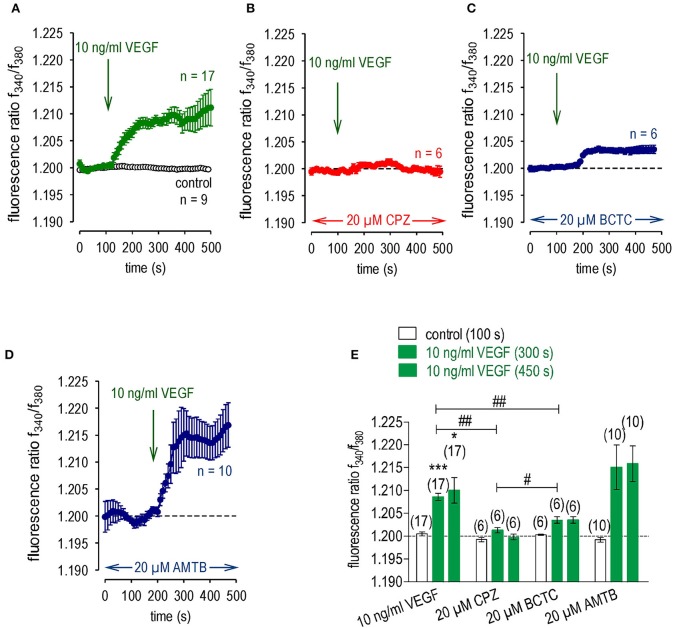Figure 2.
VEGF transactivates TRPV1 channels in UM 92.1 cells. VEGF (10 ng/ml) was added at the indicated time points (arrows). Data are mean ± SEM of 6–17 experiments. (A) Mean trace showing VEGF-induced Ca2+ increase (n = 17). (B) Same experiment as shown in (A), but in the presence of CPZ (20 μM). CPZ clearly suppressed the VEGF-induced Ca2+ increase (n = 6). (C) Same experiment as shown in (A), but in the presence of BCTC (20 μM). BCTC partially suppressed the VEGF-induced Ca2+ increase (n = 6). (D) Same experiment as shown in (A), but in the presence of AMTB (20 μM). AMTB had no effect on the VEGF-induced Ca2+ increase (n = 10). (E) Summary of the experiments with VEGF and the TRP channel blockers. The asterisks (*) show significant Ca2+ increases with VEGF (n = 17; 300 s; ***p < 0.005; 450 s; *p < 0.05; paired tested). The hashtags (##) indicate statistically significant differences of fluorescence ratios between VEGF with and without the TRP channel blockers CPZ and BCTC, resp. (n = 6–17; 300 s; ##p < 0.01; unpaired tested). One hashtag (#) indicates a statistically significant difference between CPZ and BCTC effect on VEGF-induced Ca2+ increase at 300 s (n = 6; #p < 0.05).

